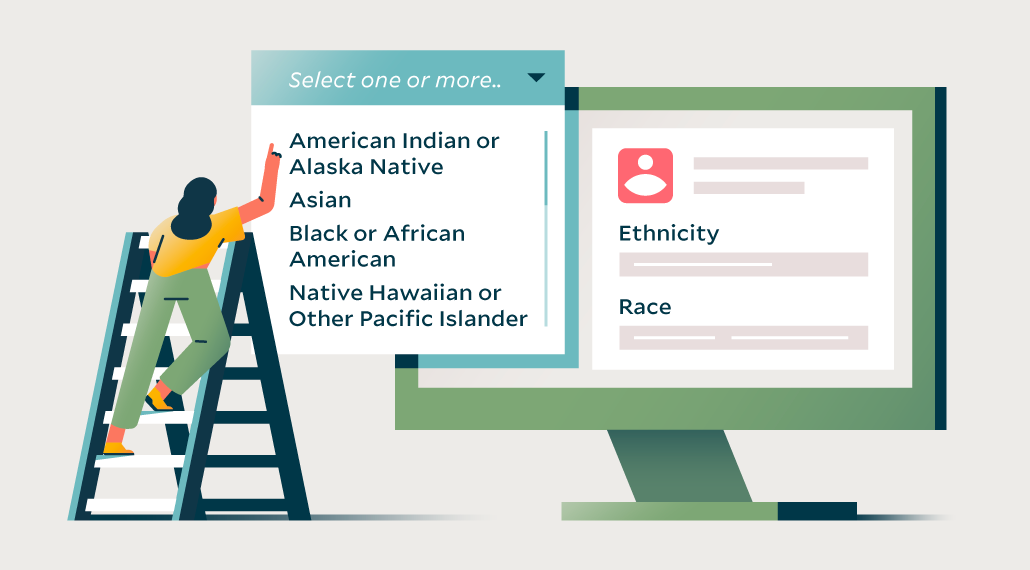November 3rd, 2023
How to Collect and Measure Diversity Data Early in Your Clinical Trials
By OneStudyTeam

Within the FDA’s guidance document issued in August 2023: Postmarketing Approaches to Obtain Data on Populations Underrepresented in Clinical Trials for Drugs and Biological Products, the FDA recommends sponsors “present information from premarket clinical trials on the safety and effectiveness of drugs in terms of gender, age, and racial subgroups” while including underrepresented patient populations. The recommendation continues: “However, if, despite the sponsor’s best efforts, these populations are not adequately represented in premarket clinical trials, it may be appropriate to collect such data in the postmarketing setting.”
While that avenue is still available if needed, here’s why it’s best practice for sponsors to avoid that postmarketing data collection when working to confirm the success of your FDA Race and Ethnicity Diversity Plan:
- You may be required to conduct post-approval studies or clinical trials to ensure the statutory criteria are met;
- You may be required to pull data from additional sources to show clinical benefit or safety in specific sub-populations;
- You may subsequently take valuable time and resources from other studies you’re recruiting and enrolling for in order to meet these requirements, affecting timelines and goals across your portfolio.
How to measure diversity in clinical trials?
To keep timelines and goals on track across your portfolio, ensure each of your trials is strategically set up to collect premarket patient diversity data. Better yet, ensure each of your trials is strategically set up to collect pre-enrollment patient diversity data, so you can take immediate action when diversity goals are at risk. Here are four ways for how to measure diversity in your clinical trials – both by gathering and by tracking data early in your clinical trials:
- Encourage sites to collect race and ethnicity data as part of their pre-screening workflow.
- Empower sites to build out a database of patients across trials with race and ethnicity data documented.
- Work with recruitment partners who have expertise in recruiting diverse patients.
- Track the progress of patient data during recruitment, not just after randomization.
(1) Encourage sites to collect race and ethnicity data as part of their pre-screening workflow.
It’s obvious, but it requires clear communication with sites: In order to track data, you need to gather it. During your clinical study startup process, it’s important to set expectations around the pre-screening process with your site teams. Not only does that mean discussing which digital platform they’ll use to collect patient information related to inclusion/exclusion criteria, it also means discussing the need to document race and ethnicity information for each patient at the same time.
Set these expectations during Site Qualification Visits and Site Initiation Visits, and in the monitoring plan.
(2) Empower sites to build out a database of patients across trials with race and ethnicity data documented.
Provide your site teams with a secure digital database (like the StudyTeam platform) where they can easily add patient information during pre-screening like race, ethnicity, and whether or not that person meets I/E criteria. This database can function as a repository for patients who aren’t eligible for the specific trial a site is recruiting for, so the site team can quickly match those patients to other current or future trials.
With the diversity data already stored, sites can more easily match a diverse patient population to other current or future trials. As soon as those “unmatched” patients enter another trial’s enrollment funnel, the sponsor can start tracking that ready-to-go data toward their diversity goals on that trial.

(3) Work with recruitment partners who have expertise in recruiting diverse patients.
Partners who specialize in recruitment can provide expertise to more efficiently identify and pre-screen patients to help enroll a diverse population. Leal Health, for example, works to democratize access to advanced cancer treatment by implementing artificial intelligence to inform and empower patients from diverse backgrounds. The company offers an AI-powered treatment decision support platform that provides unbiased and personalized suggestions by analyzing available options based on a patient’s exact cancer diagnosis and online questionnaire.
Tzvia Bader, CEO and co-founder of Leal Health, said in a press release: “With over 32 percent of the 150,000+ patients in the Leal community who come from diverse ethnic groups, we have the tools and data to help pharma identify the real barriers and help mitigate these issues that will, in turn, improve accessibility and participation of more diverse patient populations in clinical trials."
Whichever recruitment partners you choose, ensure they can send patient information directly into the patient management platform your site is already using. StudyTeam’s Referral Partner Interface enables that process, reducing site workload around further pre-screening and screening of those patients, while streamlining de-identified information (diversity data included) to the sponsor side.
(4) Track the progress of patient data during recruitment, not just after randomization.
Once you’re empowering your site teams to input data as early as patient identification and pre-screening, it’s your turn to review and analyze that data to determine (a) if your trial recruitment is tracking toward your FDA Race and Ethnicity Diversity Plan and if not (b) what actions you can take to make any adjustments to your protocol or recruitment strategy to further diversify your enrolling patient population.
Traditionally, sponsors don’t see diversity data until after randomization, which can lead to a major problem: If you review that data after randomization and you notice you’re not on track to meet diversity goals, it’s too late to take action and reconfigure your recruitment strategy. At that point, you’re way past recruitment.
When your sites collect this data during pre-screening and you have the technology to review it as it comes in, you can assess earlier than ever before whether your trial is on track to enroll an appropriately representative population. That means you can take any corrective actions earlier than ever before, keeping your trial on plan, on time, and on budget.
That’s why StudyTeam for Sponsors generates reports that specifically visualize diversity reporting data collected by site teams during pre-screening. You can actually see an up-to-date picture of diversity in your enrollment funnel.
The following comprehensive reports in StudyTeam for Sponsors are automatically generated for sponsors and are categorized by race and ethnicity.
- The Status Report illustrates the number of patients both currently and cumulatively in the recruitment pipeline across all stages and all sites entered in StudyTeam on a trial.
- Use this report to: Determine where patients of certain races and ethnicities are dropping out of the funnel.
- The I/E Criteria Report aggregates leading reasons for patient ineligibility across all sites within StudyTeam.
- Use this report to: Pinpoint which I/E criteria are disproportionately impacting patients of certain races and ethnicities.
- The Reasons Declined Report displays reasons why patients have declined to participate in a trial.
- Use this report to: Understand the barriers perceived by candidates of specific races and ethnicities.
Gather and track diversity data throughout your enrollment funnel on every clinical trial.
With the right strategy in place, you can more easily adhere to the FDA’s guidance of presenting diversity data from premarket clinical trials. Provide your site teams with clear expectations and technology that supports their patient database buildout, work with diversity-focused recruitment partners, and routinely monitor incoming diversity data in every phase of enrollment. With these steps in place, you can identify barriers to enrolling a diverse population as early as possible – and proactively take any actions to keep enrollment timelines and overall clinical trial timelines on track.
Related Posts

How Does a Trial Manager in Greece Improve Clinical Trial Operations with StudyTeam®?
Dimitris Tziogas, local trial manager at a biotechnology company in ...
Read More
How to Address Key Clinical Trial Challenges, According to Clinresco Centres in South Africa
There’s no single solution to overcoming a research site’s specific ...
Read More
3 Clinical Trial Billing Challenges Research Sites Solve with StudyTeam
Challenge 1: Complicated coverage analysis Challenge 2: Tedious budgeting ...
Read More

.png?width=64&name=OST%20Transparent%20(1).png)